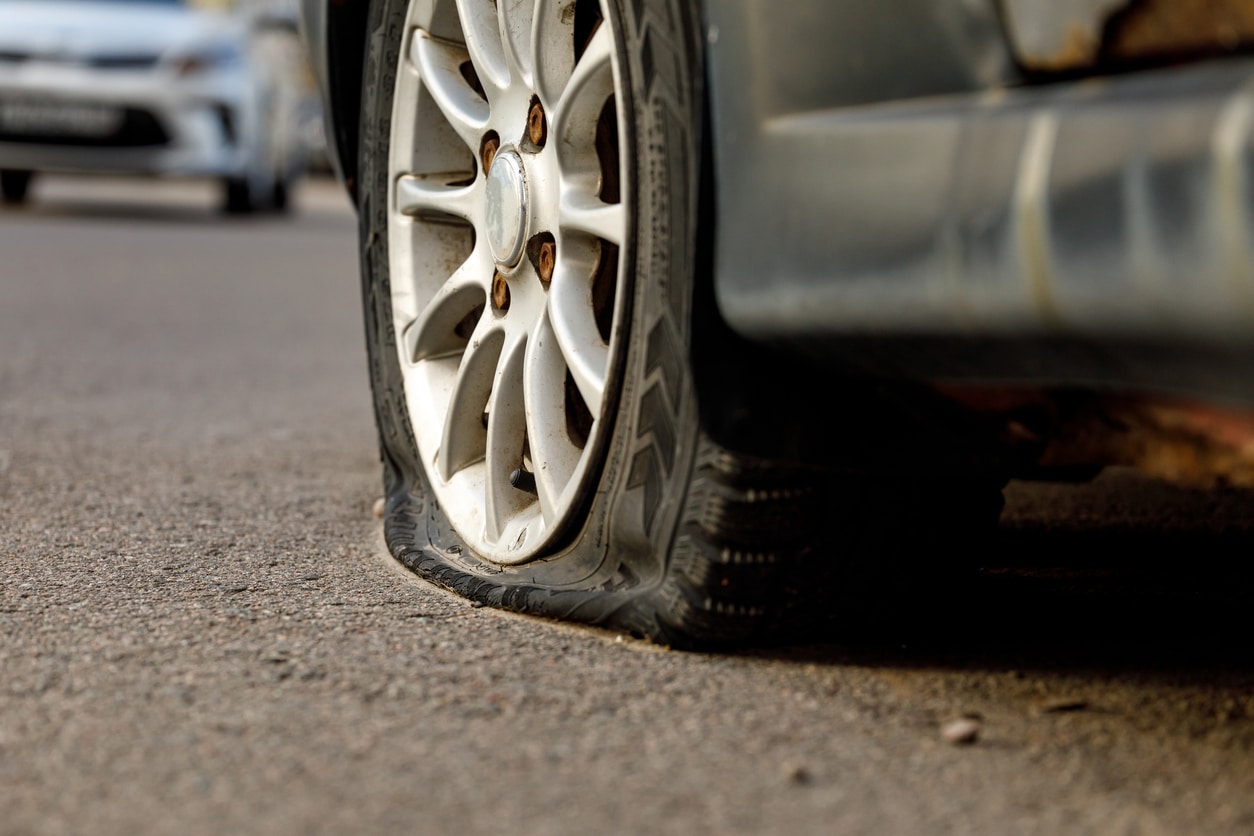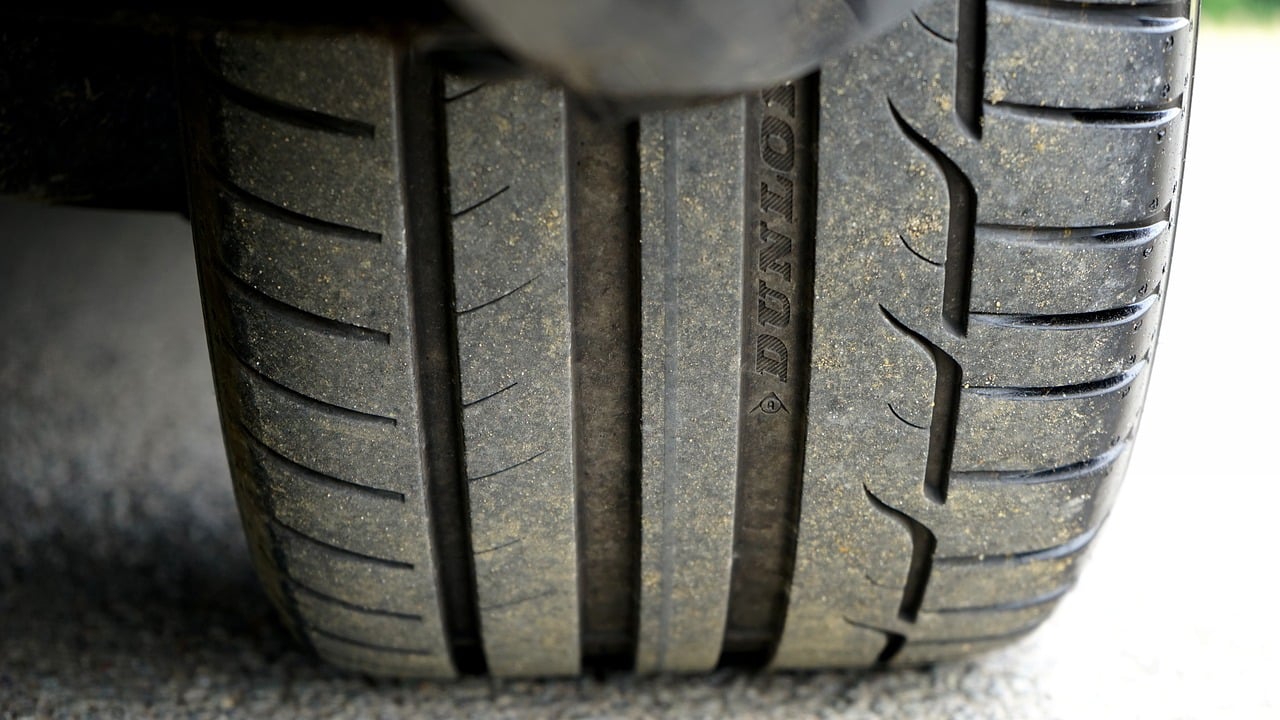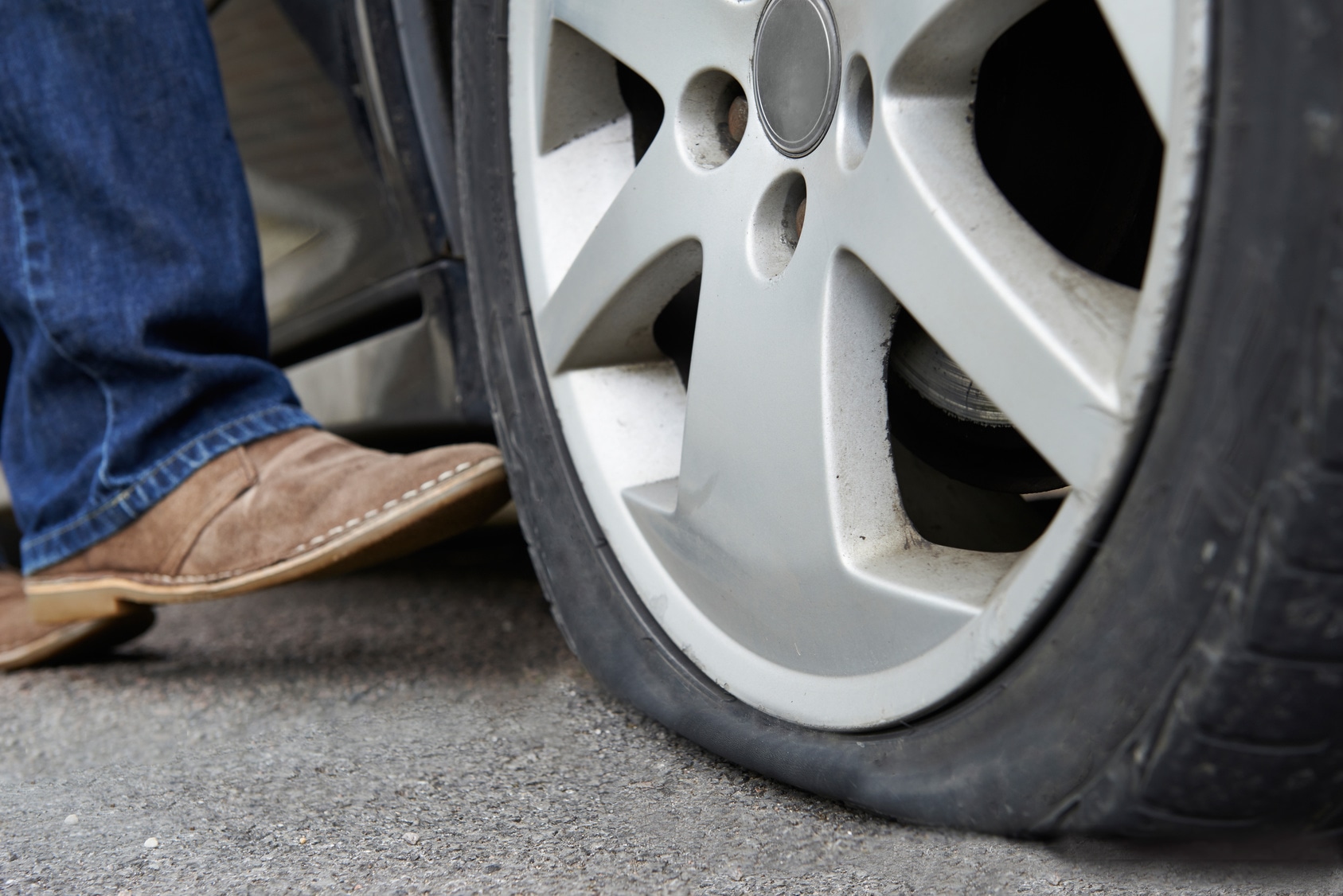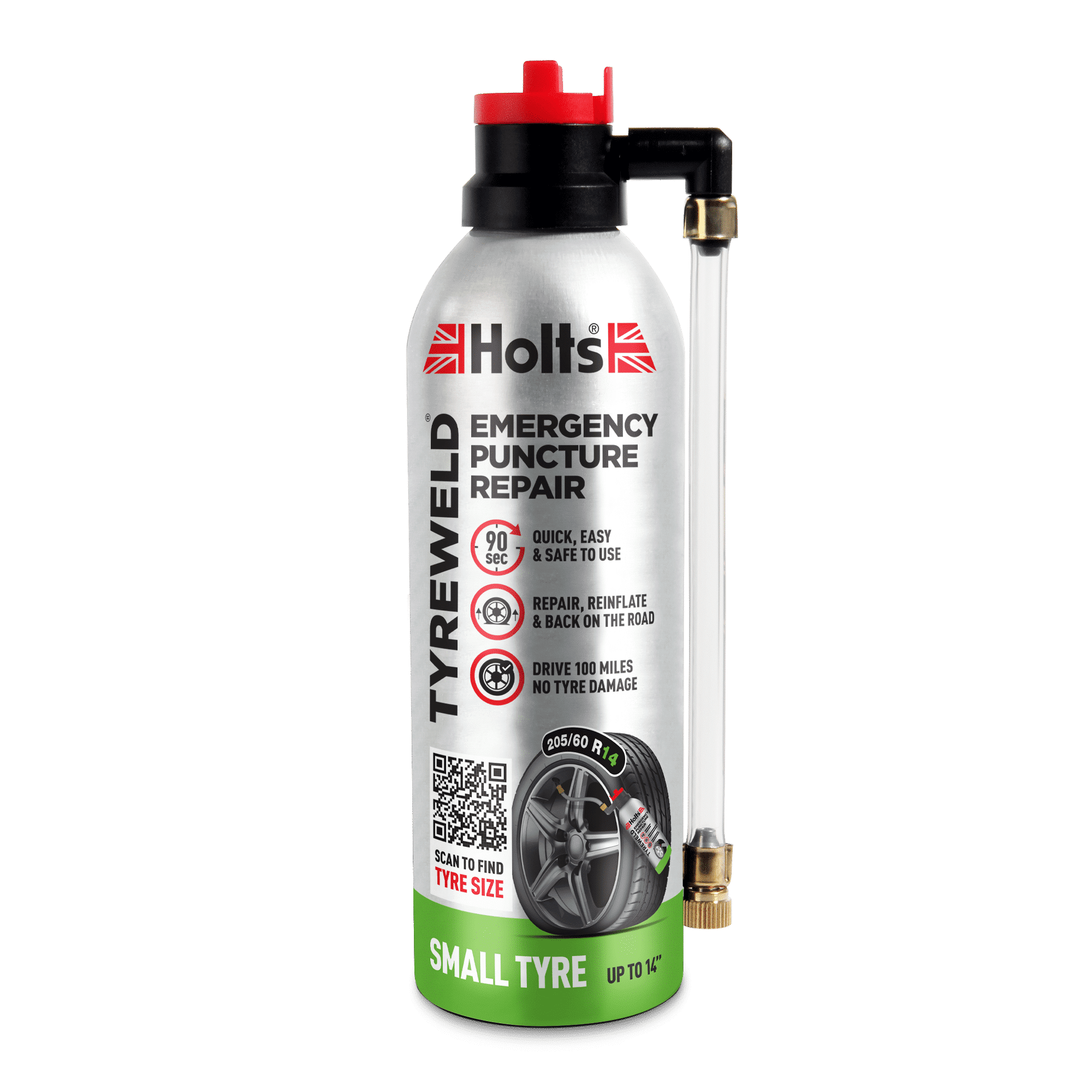Punctures are annoying, inconvenient, and potentially dangerous, not to mention a frustrating addition to your car’s maintenance bill.
They’re something every driver potentially has to live with though, so it’s good to know what to do if you’re unlucky enough to experience one. In this in-depth guide, we’ll show you what to do when you have a puncture, including emergency steps, advice on slow punctures, and the process of fixing a flat tyre.
Quick Links
- What to Do When You Have a Puncture While Driving
- Fix a Puncture: Is My Car’s Flat Tyre Repairable?
- Slow Punctures: How to Tell If You Have One and What to Do About It
What to Do When You Have a Puncture While Driving
Having a puncture while driving is something every motorist fears. Known as a ‘blowout’, punctures in a moving car can be alarming, especially when you’re travelling at speed on the motorway.
Not all punctures out on the road are as scary as a blowout however. Sometimes you might not notice you have a puncture until your car is left stationary, in which case you can fix the problem from the comfort of home.
Still, punctures can happen when you least expect it, so it’s better to be prepared for the worst. The following steps will show you what to do when you have a puncture at the wheel.

-
Ease off the accelerator
How you slow down is important when you have a puncture. Hitting the brakes is your first instinct, but as with skids, this can make the problem worse.
Instead, ease off the accelerator and slow down gradually. Keep both hands firmly on the wheel as the puncture may have affected the handling. Switch on the hazard warning lights to alert others that you have a problem.
Engine braking can help you to decelerate faster without using the brakes. Our partner range, Redex, has a helpful guide on engine braking and its benefits.
-
Look for a safe place to stop
Once you’ve started to slow down, your next priority is to find a safe place to pull over. You need to do this as quickly as possible, otherwise you could permanently damage the tyre and risk losing control.
If you’re on the motorway, guide your car onto the hard shoulder using small, smooth movements with the steering wheel. If it’s a smart motorway, you’ll need to find a refuge area where you can stop safely out of the traffic flow.
On other roads, things are more difficult. You should begin to slow and put on your hazard warning lights before finding a suitable place to stop. Try to find a layby if possible, or else pull on to a grass verge at the side of the road out of the flow of traffic.
-
Make sure you and passengers are safe
With the hazard lights left on, apply the handbrake, switch off the ignition and exit the car via the passenger door. Have all passengers move away from the road, preferably behind a barrier.
-
Assess the damage
If it’s safe to do so, check over the deflated tyre to assess its condition. Are there major signs of damage to the tyre wall or tread? Is the rim visible? If you spot significant damage, typically caused by a full blowout, you’ll need to fit a spare wheel or call your breakdown provider.
Can’t see any major visible problems? Move on to step five below.
-
Apply Holts Tyreweld
Holts Tyreweld is an essential tool to keep in your car for when punctures strike. Our emergency puncture repair system is specifically designed to get you back on the road after a puncture, so you can quickly get you and your family out of danger before permanently fixing the problem in a safer and more convenient location.
Fixing a puncture or fitting a spare wheel at the roadside is dangerous and inconvenient, and many newer car models do not even come with a spare or space saver tyre. The Tyreweld emergency puncture repair system eliminates the risk and hassle caused by punctures, resealing and reinflating the tyre to get you back on the road in minutes.
If you’re new to Tyreweld and want to find out how it works and how to use it, our in-depth guide can help.
-
Repair the tyre
After reaching your destination with the help of Holts Tyreweld, we recommend having the tyre assessed and repaired by a professional. Unlike competitor products, Tyreweld can be easily washed out of the tyre so that it can be repaired as normal.
That’s not to say all punctures are repairable however. Read on below to find out more about permanently repairing a flat tyre.
Fix a Puncture: Is My Car’s Flat Tyre Repairable?
In most cases, the punctures you pick up on the road will be repairable, so you don’t have to fork out for a brand-new tyre. However, if you’ve had a blowout or the puncture is in a specific place on the tyre, there’s a chance you could be looking at a replacement.
Below, we offer guidance on when you can and can’t repair a flat tyre.
The Tyre is Repairable
A lot of punctures are repairable. This involves inspecting the inside of the tyre for damage (and removing foreign objects, e.g., nails or thorns) before applying a patch to the hole, making the tyre airtight and supporting its internal structure.
Typically, your tyre should be repairable if:
- The puncture is in the main tread of the tyre
- The puncture is less than 5mm in diameter
- There’s no other damage to the tyre which could affect its safety and performance

A tyre specialist will be able to advise whether the puncture can be repaired. Although it varies by business, puncture repairs typically cost between £20-£40 depending on the type and size of your tyre and the nature of the puncture.
The Tyre Isn’t Repairable
In some cases you might not be able to repair a tyre, meaning you’ll need to buy a replacement and have it professionally fitted. There are several reasons your tyre may be unrepairable, including:
- The puncture is in the sidewall of the tyre, compromising its structural integrity
- The hole is over 5mm in diameter
- There’s significant damage to the tyre caused by a high-speed blowout
- The puncture has damaged the inside of the tyre, meaning it’s no longer safe
- The tyre doesn’t meet legal safety limits, perhaps because it’s too worn or because it’s had too many punctures and repairs previously.

Serious problems like this are relatively rare, but if you experience one having the tyre replaced is your only option. It’s also important to note that Holts Tyreweld is only effective when used on small repairable punctures; that’s why you need to check the tyre carefully in the event of a puncture at the roadside.
Slow Punctures: How to Tell If You Have One and What to Do About It
Slow punctures are an annoying problem to fix because they’re hard to spot. They normally happen when an object (such as a nail) gets lodged in the tyre but doesn’t come out, causing air to leak out of the tyre slowly.
Repairing slow punctures is important because, if left unchecked, they can lead to full punctures and blowouts, as well as damage on the inside of the tyre. The problem is, you need to diagnose a slow puncture first to be sure where the problem lies.
Typically, the signs of a slow puncture include:
- A change in the way the car handles
- A slow or stiff feeling in the steering wheel
- A new noise or vibration
To diagnose a slow puncture and locate the offending tyre, you need to check the pressure every day. Pump all four tyres to the recommended PSI and then check them the next day.
Do this for a couple of days to ascertain which tyre is deflating. From there, you can book your car in to have the slow puncture repaired.
Repairing a slow puncture is the same process as a normal puncture. The tyre specialist will assess the damage and tell you whether it’s repairable, before removing the object, patching up the hole, and hopefully getting you back on the road without the need for a replacement.
We hope this guide sets the record straight on punctures and how to deal with them. Remember, Holts Tyreweld is an essential tool to add to your in-car emergency kit, providing peace of mind that you can get back on the road after a puncture. For more motoring guides and advice, read the Holts blog or visit the homepage for our full product range.


